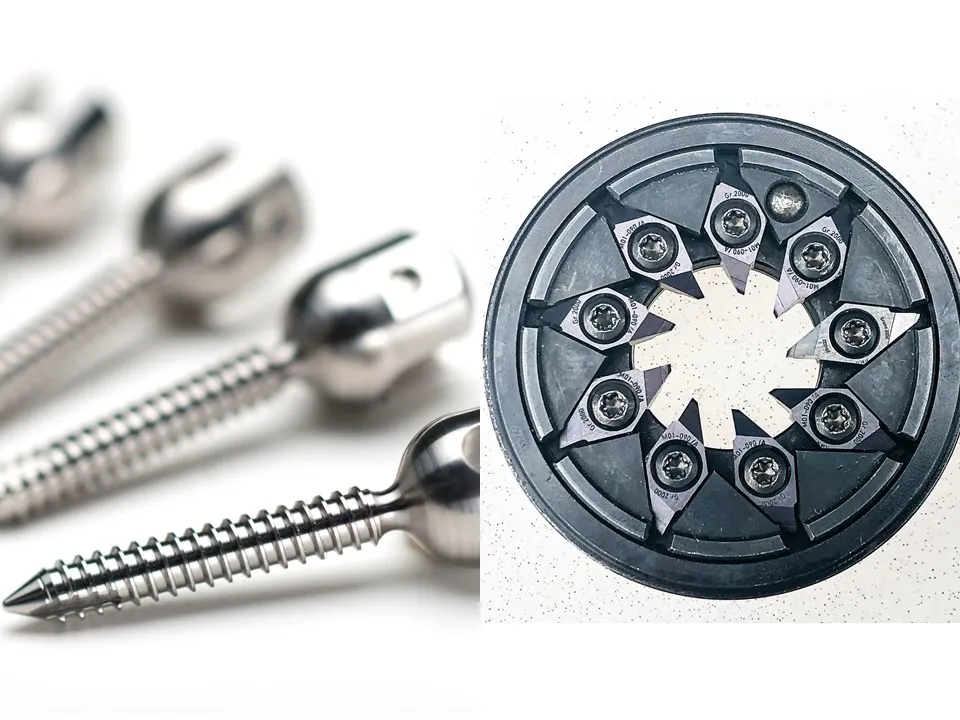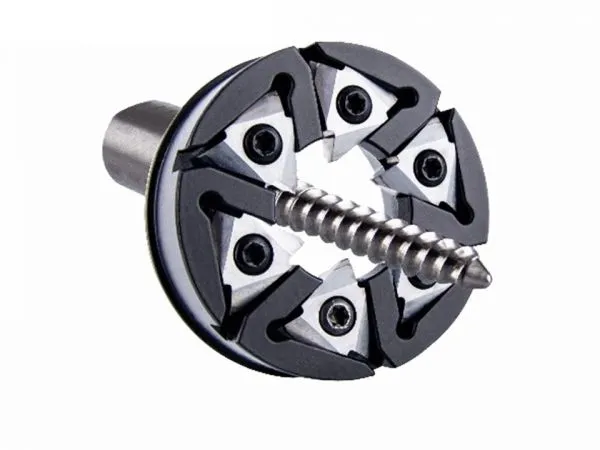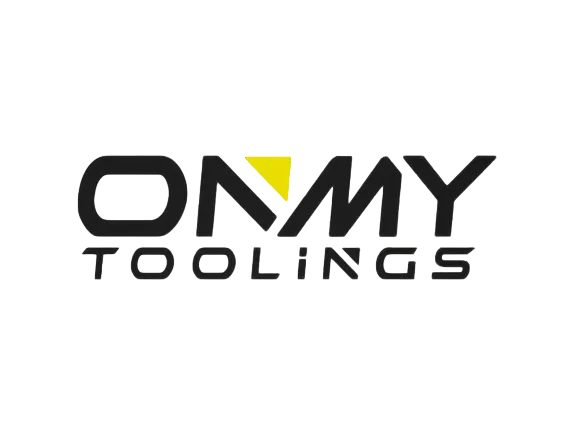Internal threads are cut using a thread whirling head to perform rotational cutting inside the workpiece. This method is suitable for machining internal threads and enables efficient and precise internal thread whirling.

Thread whirling is a machining method used to cut threads on a workpiece. It involves mounting a tool or thread whirling head on a machine and cutting the workpiece by rotating and moving radially.
During the thread whirling process, the tool or thread whirling head rotates and moves axially along the workpiece to cut a thread groove. The cutting tool typically has specialized blades or cutting edges for shaping and sizing the threads.
Thread whirling can be used to machine various types of threads, including internal and external threads. It is widely used in manufacturing industries to produce thread whirling attachments such as bolts, nuts, shafts, fittings, etc.
The advantages of thread whirling
1. Much higher machining efficiency compared to traditional turning – up to 10 times or more.
2. Single pass profiling of the workpiece without the need for multiple offsets or tool retractions.
3. No modifications are needed to the existing lathe infrastructure – adjustable helix angle for easy installation.
4. Surface roughness as low as Ra0.8 microns or better achievable, along with a 2-fold improvement in machining tolerances.
5. Simplified and faster programming with profile inserts having high precision locating of inserts and pockets, lowering technical skills required by operators.

the speed of thread whirling and feeds
According to NTK, the main spindle speed will range from 1 to 30 RPM, while the whirling cutter will run between 1,000 and 4,000 RPM. The feed rate will be the same as the lead on the thread. Parameters can vary from one manufacturer to another.
The differences between thread whirling and other machining methods
- Compared with milling:
- Whirling can achieve a better surface finish and higher accuracy.
- Whirling has higher cutting speed and efficiency. Milling threads is less efficient.
- Whirling can produce internal threads and is more suitable for mass production.
- Compared with melting:
- Melting forms the entire thread in one pass, whirling forms it gradually.
- Melting has no chips, whirling produces chips.
- Melting needs larger equipment investment, whirling equipment is relatively simple.
- Melting can be used for materials that cannot be turned.
- Compared with stamping:
- Stamping forms in one stroke, whirling needs multiple steps.
- Stamping cannot achieve very high accuracy.
- Stamping only applies to ductile materials, whirling has wider applicability.
- Compared with grinding:
- Grinding is mainly for finishing, inefficient for production.
- Whirling can produce complex threads, difficult to grind.
- Grinding cannot do internal threads.
Thread whirling process

1.Preparation:
Identify the workpiece and the desired thread specifications.
Prepare the appropriate thread whirling tool or thread whirling head.
Install and adjust the tools, workpiece holding devices, and machine settings.
2.Set cutting parameters:
Determine suitable cutting speed, feed rate, and cutting depth based on the thread specifications and workpiece material.
Consider the tool geometry and material to ensure efficient and high-quality thread cutting.
3.Secure the workpiece:
Use proper workpiece holding devices to secure the workpiece on the machine, ensuring a stable machining process.
4.Commence whirling:
Start the machine and position the tool or thread whirling head onto the workpiece.
Control the machine’s power and motion systems to enable the tool to cut threads by rotating and moving radially.
5.Monitor and adjust:
Monitor cutting forces, temperature, and cutting fluid supply during the machining process.
Make necessary adjustments based on the monitoring results to ensure thread machining quality and stability.
6.Completion and inspection:
Stop the machine after completing the thread whirling process.
Inspect the machined threads using thread measuring tools to verify their dimensions, pitch, and quality compliance.
Material suitable for thread whirling
The thread whirling head is suitable for various types of materials, including but not limited to:
- Metal materials: The thread whirling head is suitable for machining various metal materials, such as steel, iron, aluminum, copper, stainless steel, etc.
- Alloy materials: This includes high-temperature alloys, titanium alloys, nickel alloys, etc., for which the thread whirling head can be used for machining.
- Plastics and composite materials: The thread whirling head can also be used for machining plastics and composite materials, such as polyvinyl chloride (PVC), polypropylene (PP), polyamide (nylon), etc.
It is important to note that different materials may have different machining characteristics and cutting requirements. For harder and more difficult-to-machine materials, a more robust and wear-resistant thread whirling head may be required. Additionally, factors such as thermal conductivity, cutting performance, and cutting speeds of the materials can also affect the effectiveness and machining quality of thread whirling. Therefore, when selecting a thread whirling head, it is necessary to consider the characteristics of the workpiece material and specific machining requirements.
The application of thread whirling
- Machining industry
Various machinery and parts require threaded holes and shafts, such as gearboxes, valves, hydraulic and pneumatic components etc. Thread whirling is used extensively to produce external and internal threads on these mechanical parts.
- Aerospace
Aircraft and spacecraft contain many critical threaded fasteners and joints. Turbine engine components also rely on threads for assembly. Thread whirling enables high precision threads needed in aerospace.
- Motor industry
Automotive engines, transmissions, suspensions use large amounts of threaded fasteners. Thread whirling provides mass production capabilities for these automotive threads.
- Oil and gas
Oil country tubular goods, drill pipes, casings and other equipment contain premium threaded connections. Thread whirling is ideal for API and proprietary threads.
- Medical equipment
Threaded interfaces are common in implants, prosthetics, surgical instruments and other medical devices. Thread whirling meet the tiny size and fine pitch demands.
- Instruments and apparatus
Precise measurement instruments and gauges often incorporate threads for adjustment. Thread whirling is capable of micro threads and lead screws.
- Power electronics
Threaded connections are required in electrical power transmission and electronics manufacturing. Thread whirling efficiency suits mass production.
What types of parts are mainly machined by thread whirling?
Thread turning is mainly used to machine internal or external threads on cylindrical parts such as pipes, wheels or other cylindrical parts.
What are the main process steps of thread whirling?
The main process steps of thread whirling include: turning the guide surfaces → whirling the thread grooves →whirling the thread crests → polishing.
What are the main standards for selecting thread whirling tools?
The main standards for selecting thread whirling tools include: thread specifications, material, depth, quantity, etc. Different specifications and materials require matching tools.
What parameters need attention during thread whirling?
The parameters that need attention during thread whirling include: speed, feed rate, clamping force, lubrication method, etc. The setting of these parameters directly affects efficiency and product quality.
How to ensure the quality of thread whirling products?
To ensure the quality of thread whirling products, we need to: 1. Use high-quality tools 2. Correctly set each process parameter 3. Uniformly cover every thread 4. Effectively remove residual material 5. Regularly check and debug equipment
